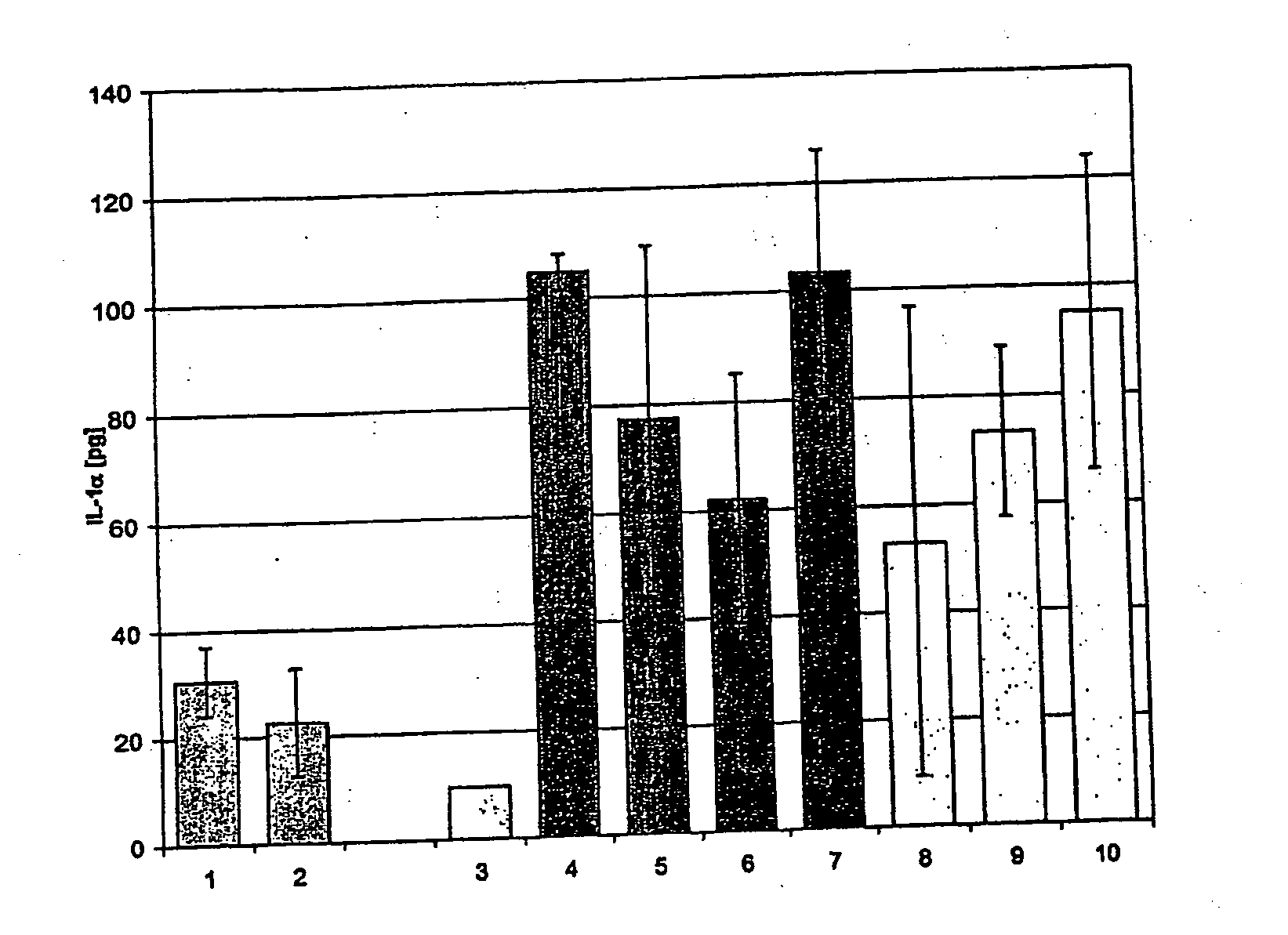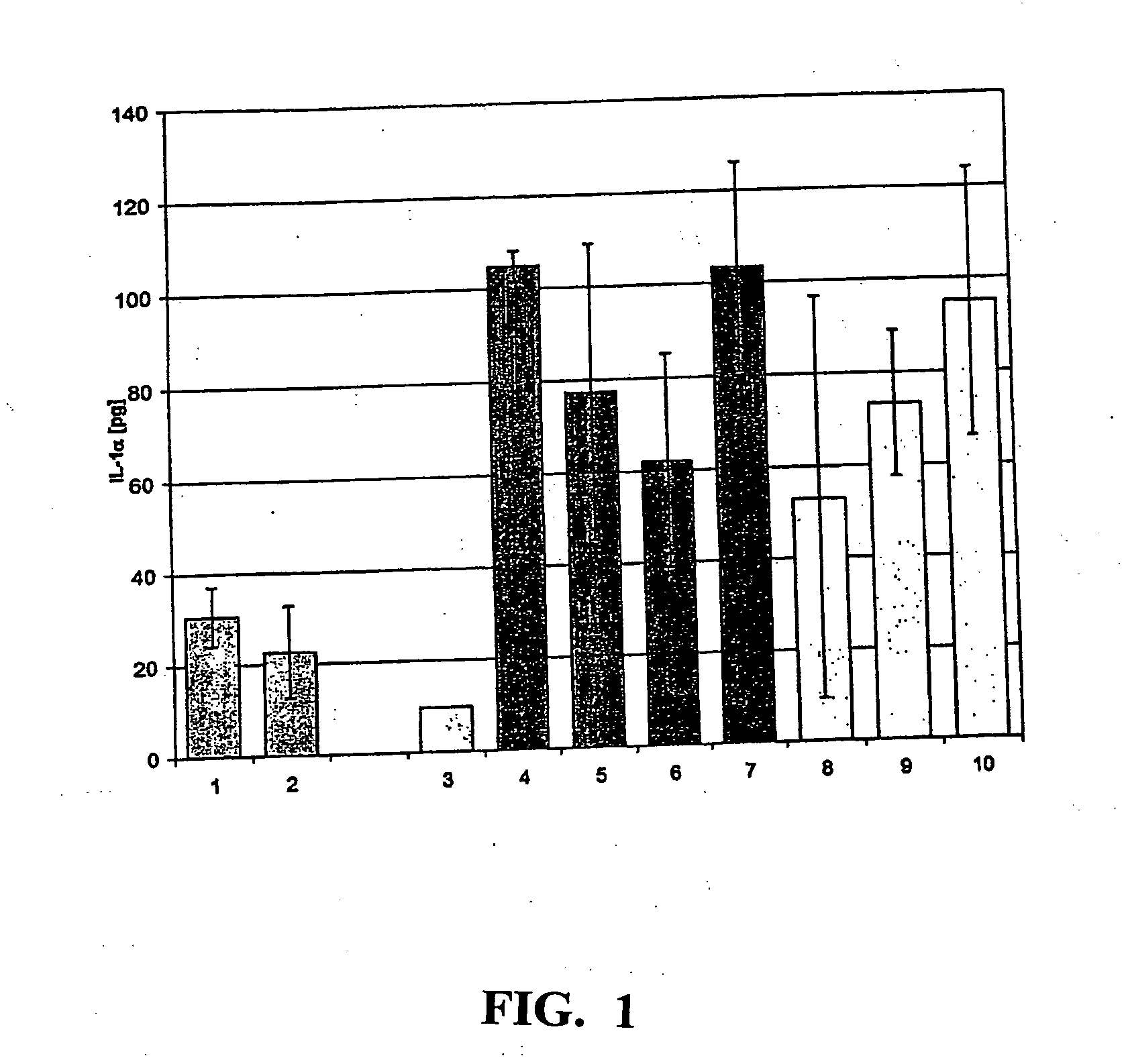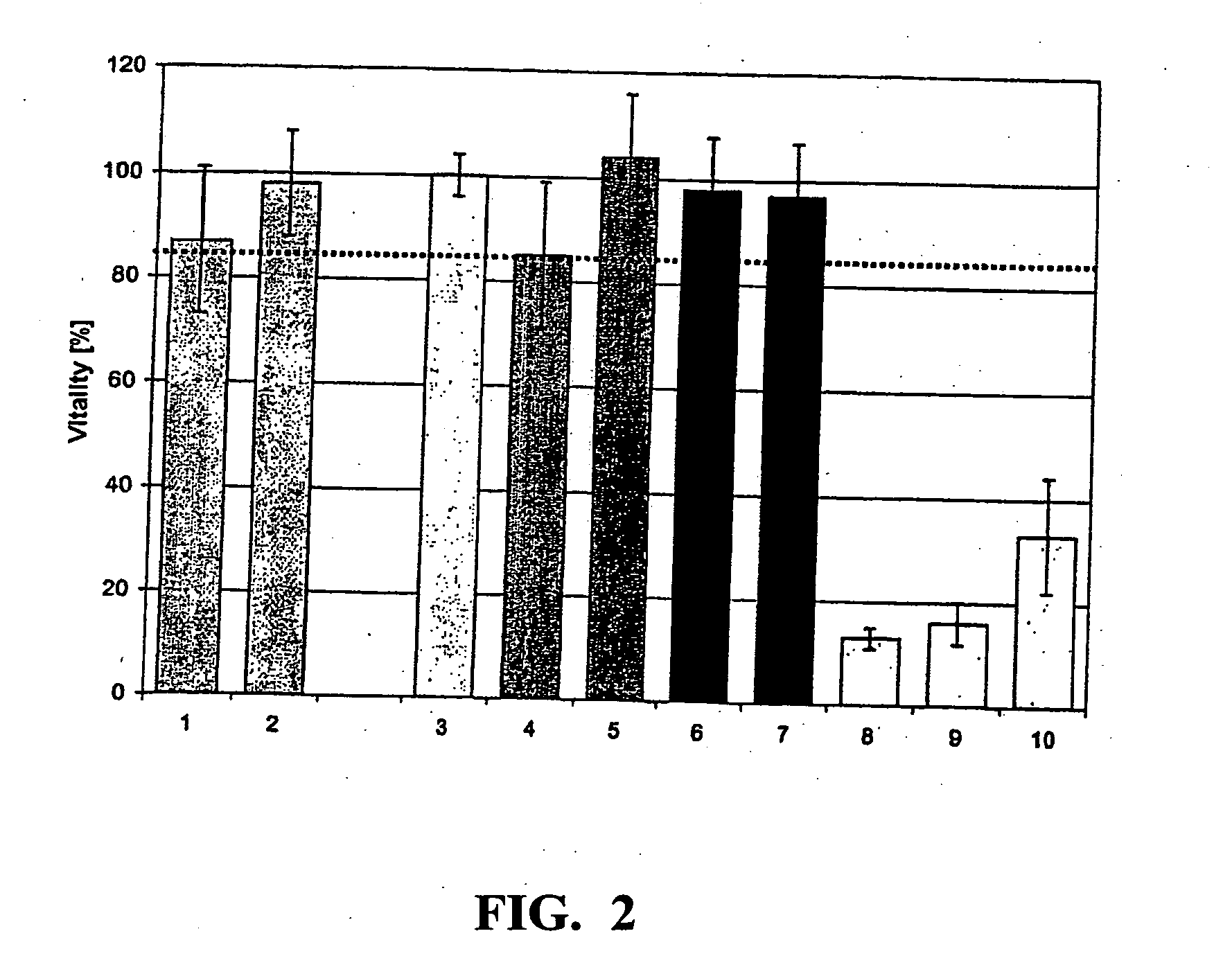Surface-modified zinc oxide for the production of nanoparticulate dispersions
- Summary
- Abstract
- Description
- Claims
- Application Information
AI Technical Summary
Benefits of technology
Problems solved by technology
Method used
Image
Examples
example 1
6.2 g of ZnO are suspended in 80 ml of THF in a 250 ml round-bottomed flask. To this dispersion are added dropwise 1.5 g of polyethylene glycol diacid 600 (Aldrich Prod. No. 40,703-8, Batch No. 24441-030), dissolved in 40 ml of THF. The mixture is then boiled under reflux for 30 minutes. It is then cooled to room temperature and the THF is decanted off. The solid is admixed with 100 ml of THF and stirred for 15 minutes. The THF is again decanted off and the modified ZnO is dried under reduced pressure. The surface-modified ZnO obtained in this way can be dispersed in water without after-treatment.
According to the particle size distribution determination by means of dynamic light scattering, 95% of the particles are smaller than 50 nm and the volume-averaged particle size is 27 nm.
example 2
3.5 g (0.043 mol) of ZnO are suspended in 100 ml of THF in a 500 ml three-necked flask. To this suspension is added a solution of 2 g of 2-[2-(2-methoxyethoxy)ethoxy]acetic acid (Fluka Art. No. 64732, Batch No. RB13802) in 30 ml of THF. The reaction solution is heated to boiling and held at the temperature for 1 hour. Within this time only a slightly cloudy dispersion is formed. After cooling to room temperature, the solvent is distilled off. The resulting solid is dispersed in 100 ml of water, and the excess acid is separated off by dialysis. After the water has been distilled off under reduced pressure, the resulting solid is dried under reduced pressure.
The modified ZnO obtained in this way can be dispersed to primary particle size in water and also in methanol, ethanol, isopropanol, acetone, toluene without after-treatment.
According to the particle size distribution determination by means of XRD, 90% of the particles are smaller than 22 nm and the average volume-weighted pa...
example 3
In this comparative experiment, the skin-calming effect of the surface-modified zinc oxide particles / dispersions according to the invention was investigated compared with other skin-calming active ingredients. The following substances were used for this purpose: 1. zinc oxide surface-modified with polyethylene glycol diacetic acid, in 0.5% strength dispersion in water; 2. zinc oxide surface-modified with polyethylene glycol diacetic acid, 2% strength dispersion in water; 3. without skin irritation—rinsed with water 4. with SDS irritation—rinsed with water 5. with SDS irritation—treated with a cortisone ointment 6. D-panthenol, 0.5% strength 7. D-panthenol, 2% strength 8. zinc oxide dispersion in accordance with DE 19907704, 0.5% strength 9. zinc oxide in accordance with DE 19907704, 2% strength 10. solvent of (8) and (9) in accordance with DE 19907704: ethylene glycol / water / triethanolamine
Formulations 1 and 2 specified above correspond to the zinc oxide dispersions acco...
PUM
| Property | Measurement | Unit |
|---|---|---|
| Percent by mass | aaaaa | aaaaa |
| Percent by mass | aaaaa | aaaaa |
| Diameter | aaaaa | aaaaa |
Abstract
Description
Claims
Application Information
 Login to View More
Login to View More - R&D
- Intellectual Property
- Life Sciences
- Materials
- Tech Scout
- Unparalleled Data Quality
- Higher Quality Content
- 60% Fewer Hallucinations
Browse by: Latest US Patents, China's latest patents, Technical Efficacy Thesaurus, Application Domain, Technology Topic, Popular Technical Reports.
© 2025 PatSnap. All rights reserved.Legal|Privacy policy|Modern Slavery Act Transparency Statement|Sitemap|About US| Contact US: help@patsnap.com



